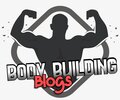Building lean muscle mass and reducing belly fat are two of the most popular fitness objectives. These goals may initially appear to be at odds with one another—muscle growth typically necessitates a calorie surplus, whereas fat loss typically requires a calorie deficit. Nonetheless, both can be accomplished simultaneously with the correct approach. Body recomposition is a common term for this process.
In-depth discussions of diet, exercise, lifestyle choices, and mentality will all be covered in this blog post on how to reduce belly fat while gaining muscle. By the end, you’ll have a comprehensive plan for successfully changing the composition of your body.
Recognizing the Difficulty: Muscle Gain vs. Fat Loss
- Fat Loss: You need to have a calorie deficit—consuming fewer calories than your body expels—in order to lose fat. As a result, the body is forced to burn fat reserves for energy.
- Muscle Gain: Your body requires additional energy and protein (a small excess of calories) to support muscle growth and repair in order to gain muscle.
These objectives appear to be at odds with one another. You might be surprised to learn how adaptable the human body is. You can burn fat and gain lean muscle by combining strength training, nutrient timing, and intelligent dieting.
Step 1: Make Proper Nutritional Choices
The basis for both muscle growth and fat loss is nutrition. You must balance your macronutrient and calorie intake if you want to make progress.
1. Determine Your Energy Requirements
- To calculate how many calories your body burns each day, use the TDEE (Total Daily Energy Expenditure) method.
- Consume 200–500 fewer calories than your TDEE, or a small calorie deficit. This is sufficient to encourage fat loss without sacrificing muscle growth.
2. Get Protein First
The most essential macronutrient for body composition is protein. It helps you maintain fullness while consuming fewer calories and promotes muscle repair.
- Daily protein intake should be between 1.6 and 2.2 grams per kilogram of body weight.
- Fish, poultry, lean beef, eggs, Greek yogurt, lentils, and whey protein are some of the sources.
3. Control Your Fats and Carbs
- Carbs: Give you energy to train. Opt for complex carbohydrates such as sweet potatoes, quinoa, rice, and oats.
- Hormones require fats. Add in healthy fats from olive oil, avocados, nuts, and seeds.
- A macro ratio that is balanced might resemble:
- 30% carbs, 40% protein, and 30% fat (adjust based on how your body reacts).
4. Pay Attention to When You Eat
- Meal before exercise: protein and carbohydrates (e.g., oatmeal with whey).
- Fast-digesting protein and carbohydrates (such as chicken over rice) make up the post-workout meal.
- Muscle protein synthesis is maximized when protein is distributed evenly throughout meals.
Step 2: Strength Training to Increase Muscle Mass and Reduce Fat
Resistance training is the quickest method for achieving recomposition. Cardio won’t help you gain muscle, and dieting won’t help you develop your body.
1. Pay Attention to Compound Movements
Large lifts increase muscle growth and calorie expenditure. Establish priorities:
- The squat
- Deadlifting
- The Bench Press
- Pull-ups and Chin-Ups
- Rows of
- Press Above
These multi-joint workouts increase strength and hypertrophy by using a variety of muscles.
2. Increasing Overload
You have to constantly push your body in order to gain muscle. Gradually increase the weight, reps, or sets. As an illustration:
- Week 1: Ten repetitions of a 100-pound bench press
- Week 4: Perform 10 repetitions of a 120-pound bench press
3. Work Out Four or Six Days a Week
- During three to four strength days, concentrate on heavy lifting and accessory work.
- One or two conditioning/cardio days: HIIT or steady-state cardio to increase endurance and burn fat.
4. Don’t Neglect Core Exercise
Lifting and burning calories are enhanced by a strong core. Incorporate ab rollouts, hanging leg raises, and planks into your workout.
Step 3: Incorporate Appropriate Cardio
Resistance training is essential, but when done right, cardio speeds up fat loss.
Cardio Types for Recomposition:
- High-Intensity Interval Training, or HIIT
- Brief periods of intense effort (such as sprinting) interspersed with relaxation.
- Effective in increasing metabolism and burning calories.
- LISS (Low-Intensity Steady State)
- Spend 30 to 45 minutes walking, cycling, or jogging lightly.
- Excellent for reducing body fat without sacrificing recuperation.
Avoid doing too much cardio. Excess can hinder the healing of muscles. Strength training should be used to counterbalance it.
Step 4: Recuperation and Lifestyle
Although recovery is often underestimated, fat loss and muscle growth occur outside of the gym.
1. Make Sleep a Priority
- Try to get between 7 and 9 hours each night.
- Insufficient sleep raises the stress hormone cortisol, which slows muscle recovery and encourages the storage of belly fat.
2. Handle Stress
Long-term stress increases cortisol, which makes belly fat reduction more difficult. Engage in deep breathing, mindfulness, or meditation.
3. Drink Plenty of Water
Water aids in digestion, metabolism, and recuperation. At least three to four liters should be consumed each day.
4. Monitor Advancement
- Make use of body composition scans, strength logs, or pictures.
- Do not rely solely on the scale; even though your body is changing, the scale may not drop significantly because muscle weighs more than fat.
Step 5: Supplements for Building Muscle and Losing Fat
Supplements can help you achieve your goals, but they are not magic.
- Whey Protein: A quick and easy way to get the protein you need.
- Creatine Monohydrate: Enhances muscle recovery, strength, and performance.
- Caffeine: Promotes energy and aids in fat burning.
- Omega-3s: Helps lower inflammation and promote fat loss.
- Multivitamins: Guarantee that there are no dietary deficiencies while on a diet.
Common Errors to Stay Away From
- Eating Too Little: Muscle loss can result from severe calorie deficits. Maintain a moderate deficit.
- Overtraining: Exercise without adequate recovery raises cortisol levels, which causes the storage of belly fat.
- Ignoring Protein: The biggest obstacle to recomposition is failing to meet your protein target.
- It’s a myth to rely on crunches to reduce belly fat. Loss of body fat does not only occur in the stomach.
- Being Impatient: Recomposition is a slow process. It might take months to see noticeable changes, but perseverance is rewarded.
An Example of a Day to Reduce Belly Fat and Gain Muscle
Meal Plan (approximately 2,200 calories, based on personal needs):
- Breakfast consists of oatmeal, berries, two whole eggs, and four egg whites.
- Greek yogurt and almonds for a snack
- Lunch consists of quinoa, steamed broccoli, and grilled chicken breast.
- Pre-workout snack: banana + protein shake
- Post-workout dinner consists of salmon, sweet potatoes, and asparagus.
- Flaxseeds and cottage cheese for an evening snack
Exercise (An Example for Push Day):
- Bench Press: 4 x 8
- 4×10 Overhead Press
- 4×12 Incline Dumbbell Press
- 3×15 Dumbbell Lateral Raises
- 3×60-second Plank Holds
Conclusions
One of the most satisfying fitness objectives you can work toward is losing belly fat while gaining muscle. The secret is striking the correct balance between resistance training, a high-protein diet, a small calorie deficit, and sufficient recovery.
Consider it a journey rather than a race. Muscle won’t grow overnight, and belly fat won’t go away overnight. However, with perseverance, discipline, and careful preparation, you’ll see your body change—becoming stronger, healthier, and leaner.
Keep in mind that the key is to work smarter, not just harder.


